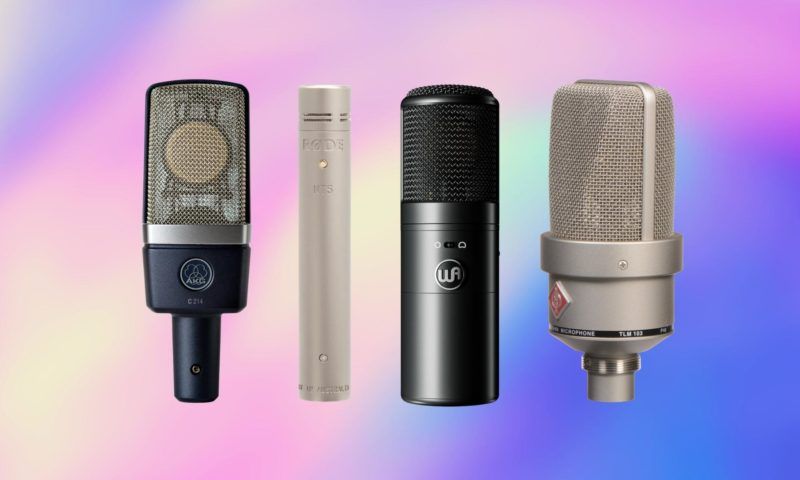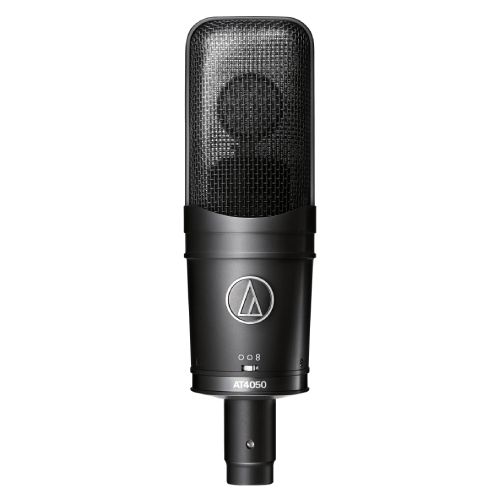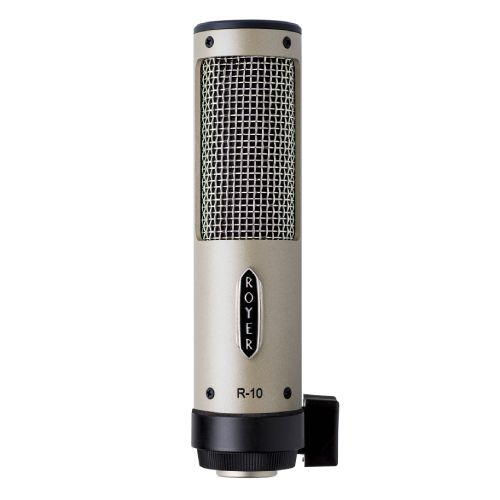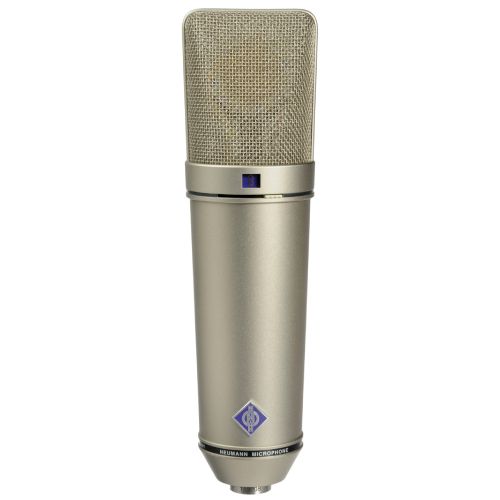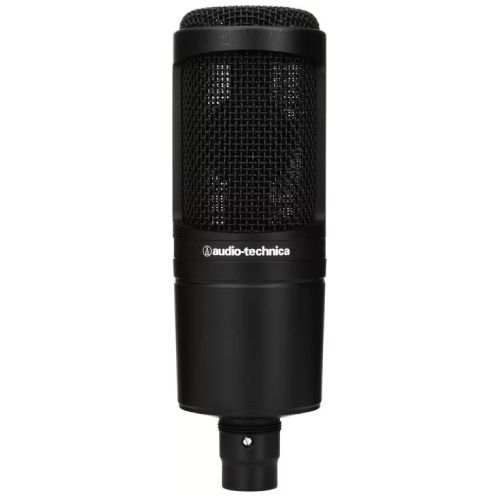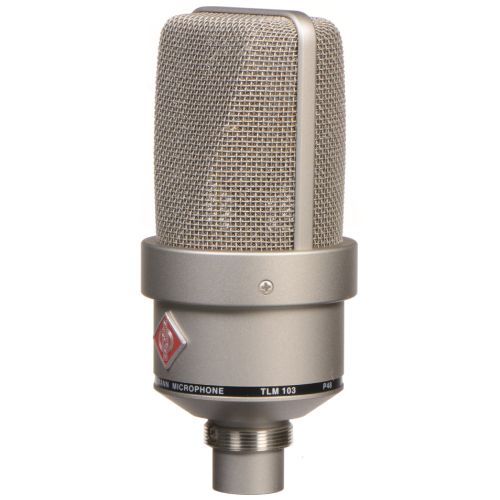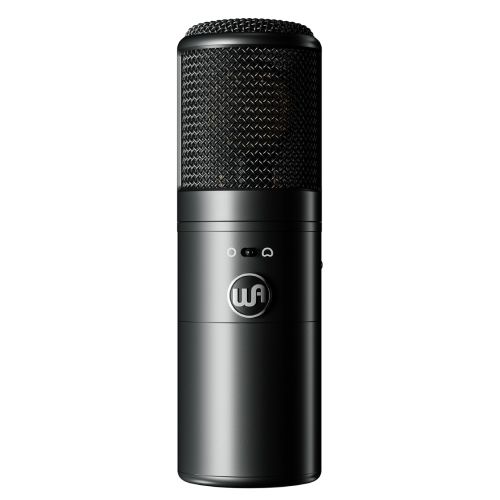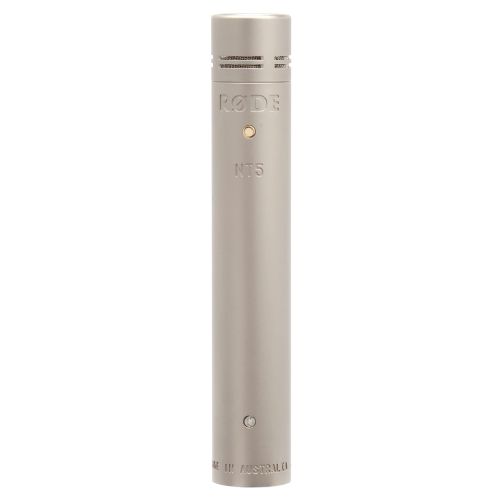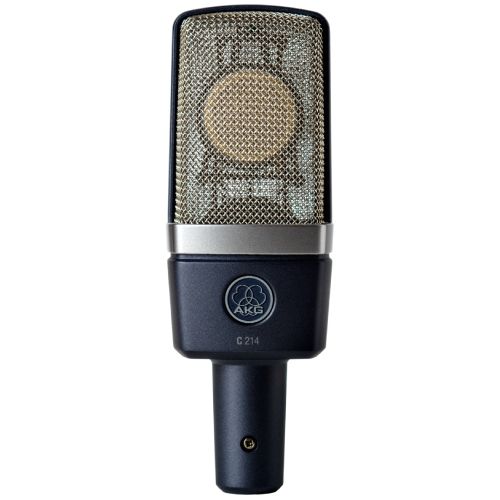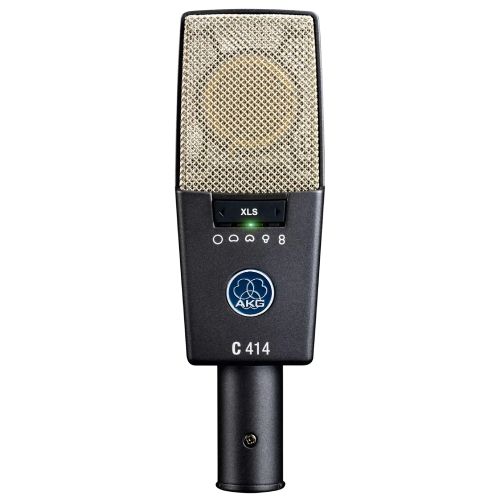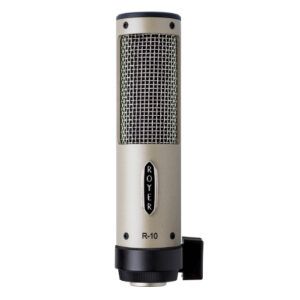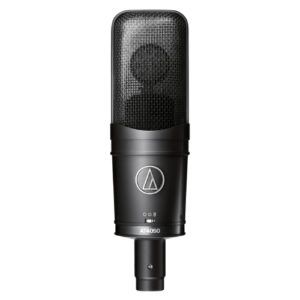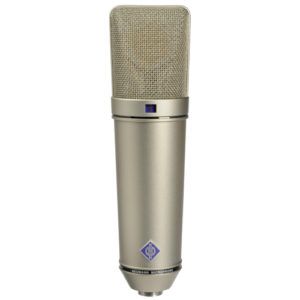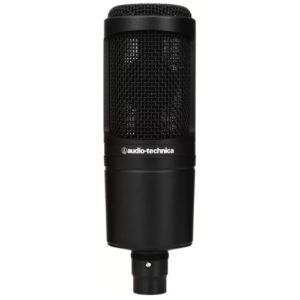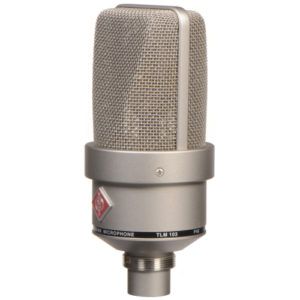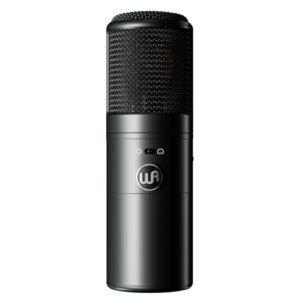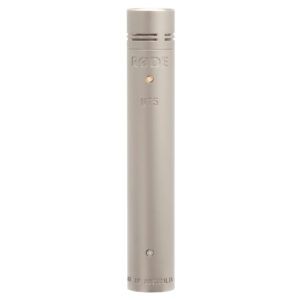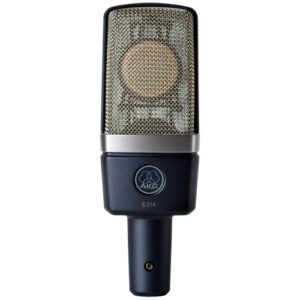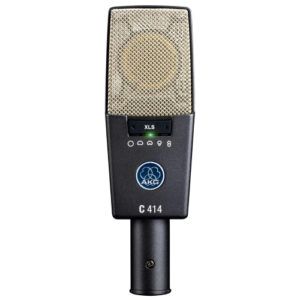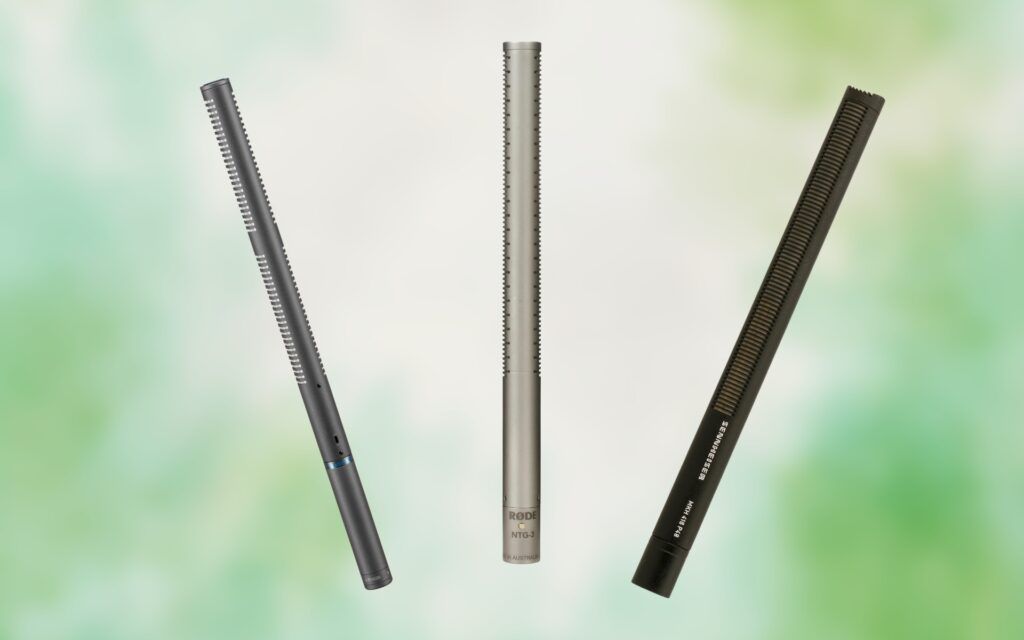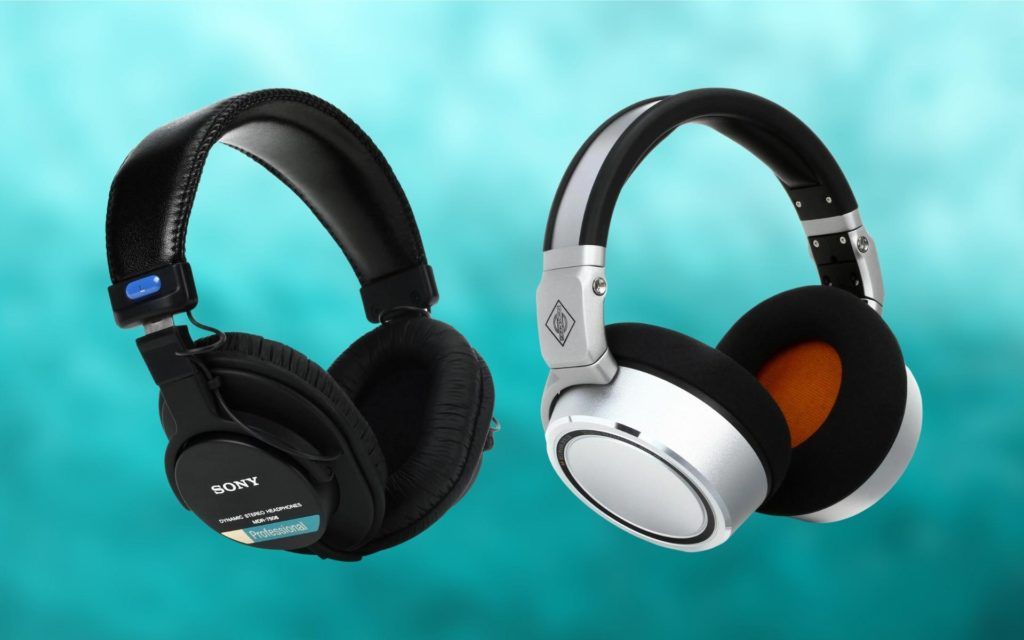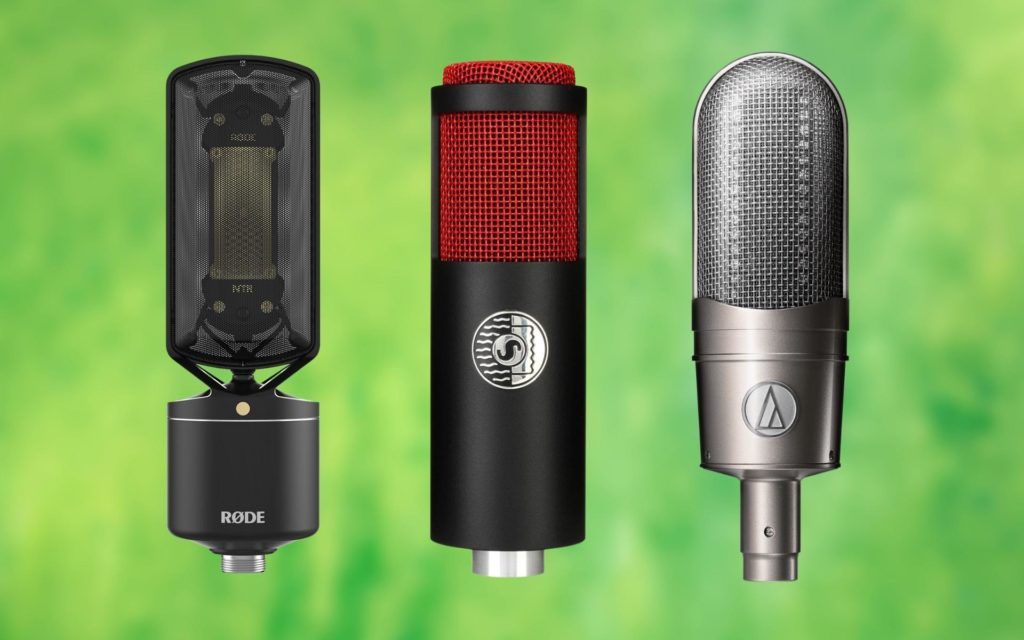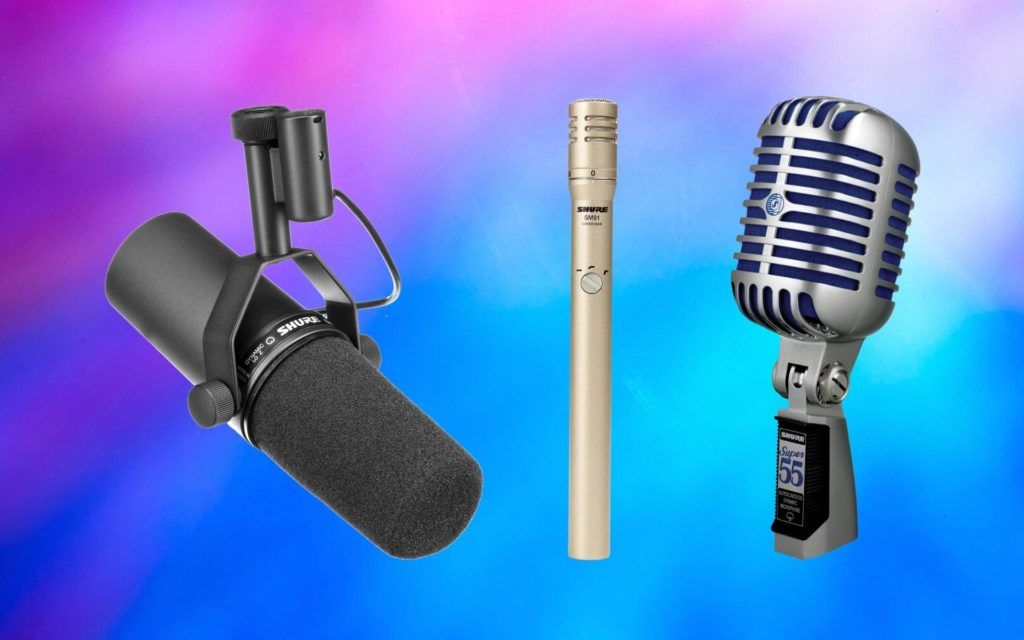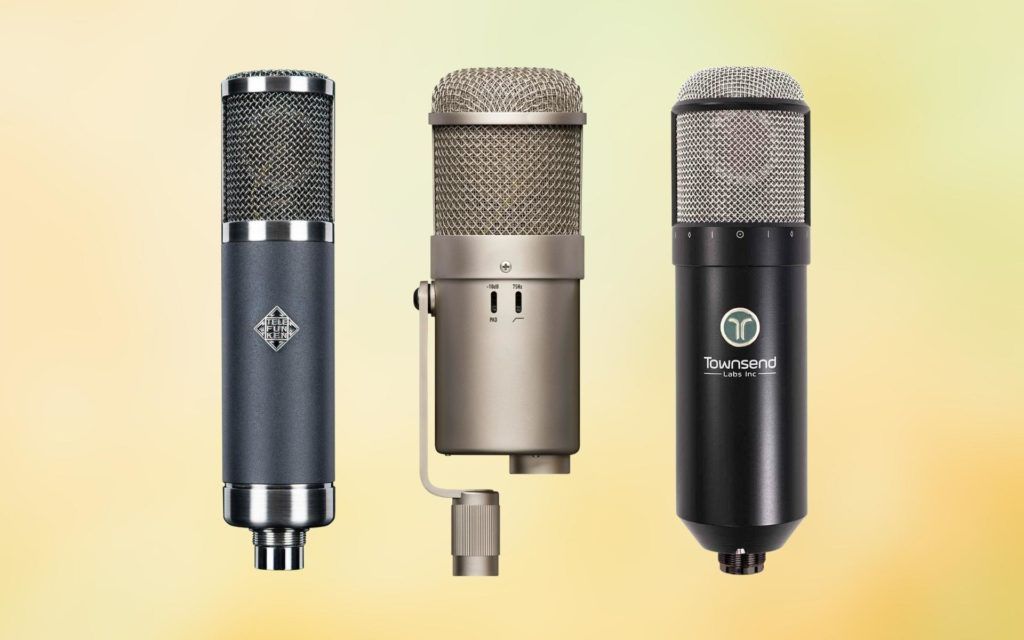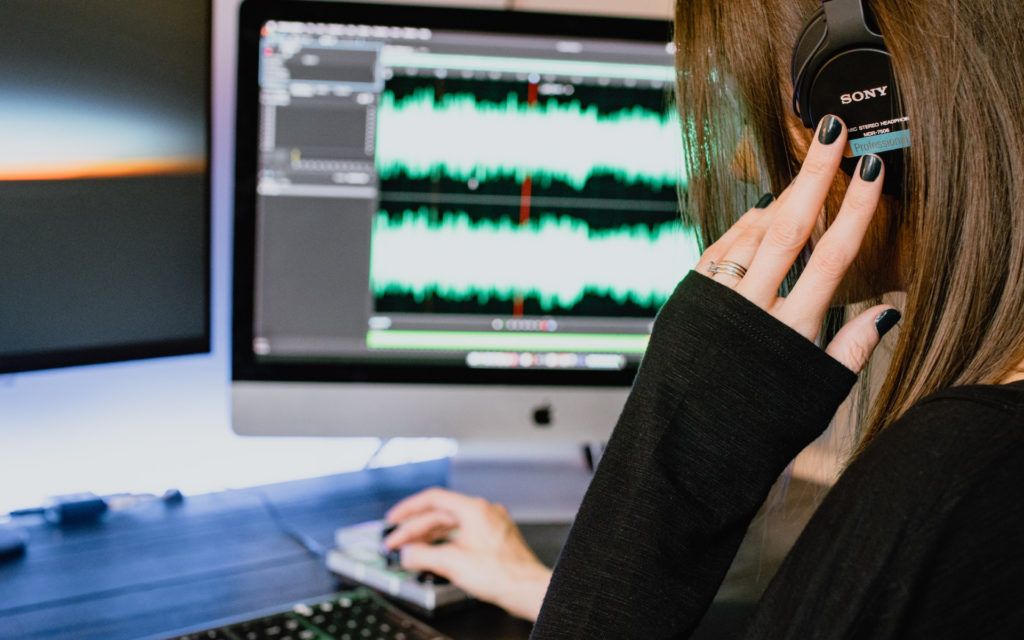We review products independently and our recommendations are genuine. If you purchase through links on our site, we may earn an affiliate commission. Learn More
Room mics are an essential component in a live recording setup. They are used to capture several instruments or sound sources, and the acoustics of the space.
Recording live music is significantly different from conventional studio recordings, as it requires planning and the proper setup to get right.
There are many different opinions on which mics are best suited to this purpose. Some suggest using a pair of condensers, while others prefer to use dynamic mics.
In this guide, you can find the best room mics for live recording from our extensive testing.
In a Rush’ Round-Up
How We Tested
To ensure that we tested each room mic for live recording with the utmost accuracy, we looked at a few important aspects. These included the tonal qualities of the mics, such as their frequency response and coloration.
We also determine whether the strings are good value for money, by combining the sonic and tactile aspects to get an overall picture of their quality. You can see the best findings from our tests in the remainder of this guide.
We then combined those findings with the microphone’s value for money, which was determined by its robustness, versatility, and ability to handle high-volume sounds. You can check out our list of the best room mics for live recording below.
Microphone for Room Recording Reviews
Royer R-10 Hot Rod Limited Edition Ribbon Microphone
Royer R-10 Hot Rod Limited Edition Ribbon Microphone Review
The Royer R-10 Hot Rod 25th Anniversary Limited-edition Ribbon Microphone is a true masterpiece that celebrates a quarter-century of sonic excellence. Loaded with a custom 25th-anniversary transformer, this microphone is not just a tribute to Royer’s enduring legacy but also a powerful tool for capturing remarkable audio.
One of the standout features of the R-10 Hot Rod is its impressive 5dB boost in output compared to a standard R-10. This boost delivers a sharper, brighter sound, making it an ideal choice for those seeking enhanced clarity and presence in their room recordings.
This microphone’s high SPL handling capabilities are a game-changer, especially when capturing loud drum sources. It effortlessly captures the impact and power a drum kit in a loud space gives out, ensuring your recordings stand out.
With its passive circuit and custom transformer, the R-10 Hot can capture clean, distortion-free sound even in challenging recording scenarios. The microphone’s vanishingly low residual noise ensures that your recordings remain pristine and free from unwanted artefacts.
This ribbon microphone is also built to withstand varying environmental conditions. Its ribbon element is impervious to heat and humidity, making it a reliable choice for recording in diverse climates and studio conditions. The flat frequency response of the R-10 Hot Rod ensures that your recordings maintain natural and unaltered sound, free from high-frequency peaks, ringing, or phase shifts.
The eye-catching black accents, including the logo, screws, and cap, give it a distinctive appearance that sets it apart in any studio setup.
With its custom transformer, increased output, high SPL handling, and robust build, it’s a top-tier microphone designed for professionals and audio enthusiasts alike.
Features:
- 30Hz-15kHz frequency response
- High SPL handling -pPassive circuit with custom transformer minimizes high-SPL overload
- Equal sensitivity from front or back of element
Pros
- Exceptional warm ribbon microphone sound, perfect for room recordings
- Limited Edition Collectible
- Flat frequency response with no high-frequency peaks, ringing, or phase shifts
Cons
- Minor difference from the standard Royer R-10
Audio-Technica AT4050 Large-diaphragm Condenser Microphone
Audio-Technica AT4050 Large-diaphragm Condenser Microphone Review
Room mics need to be versatile enough to record a range of instruments and sounds while still handling the loud volumes that occur in a live performance. The Audio-Technica AT4050 is an excellent all-rounder which can be used in a variety of ways.
I was impressed by the three switchable polar patterns that are installed on this microphone. Firstly, the standard cardioid pattern is useful when you’re recording a smaller group of musicians in a live room, as most of its focus is towards the front of the capsule.
I’d recommend using the future-8 and caridoid polar patterns when you’re recording larger ensembles of musicians, as they broaden the directionality of the mic, picking up more sounds from other angles.
The thing that sets this mic apart from most other room microphones is the finer details. It benefits from a switchable high pass filter at 80Hz, so you can instantly block out any boomy tones that occur during a live performance, and it also has a 10dB pad for easy dynamic adjustments.
The high SPL handling capabilities mean this mic won’t be overwhelmed by a loud drummer or a cranked-up guitar amp, and it also comes with a shock mount to prevent unwanted noise from being picked up.
Features:
- 20Hz-18kHz frequency response
- Cardioid, omnidirectional, and figure-8 switchable polar patterns
- 149dB max SPL handling
Pros
- Suitable for recording all instruments and vocal styles
- Perfect for capturing the blend of sounds in a live band
- Captures the upper midrange with warmth and clarity
Cons
- Not designed to capture frequencies in the higher treble band
Neumann U 87 Ai Set Large-diaphragm Condenser Microphone
Neumann U 87 Ai Set Large-diaphragm Condenser Microphone Review
In the late 1960s, iconic microphone creator Neumann released the original U 87 large-diaphragm condenser. It didn’t take long for that mic to become a staple of high-end recording studios around the world.
Decades on, Neumann decided to recreate their classic microphone with some modern advancements and slight tweaks to the design. Thus, the Neumann U 87 Ai was born.
This microphone has three switchable polar patterns: cardioid, omnidirectional, and figure-8. The versatility that this creates makes the U 87 Ai perfect for room microphone recordings of live performances.
For example, if you are recording a vocal ensemble or choir, it may be beneficial to utilize the omnidirectional polar pattern so that all of the vocalists will be captured equally.
Alternatively, you can switch the U 87 Ai to a cardioid polar pattern if you need to record a guitarist, drummer, and bassist simultaneously, as this will focus on the collective sound these instruments combine to make.
Although the U 87 Ai is one of the most expensive of the room mics we recommend, it’s a worthy investment for those who are committed to getting the best possible live recordings.
Features
- Cardioid, omnidirectional, and figure-8 polar patterns
- 20Hz-20kHz frequency response
- Gold-plated capsule
Pros
- Vintage sound with modern functionality
- Highly versatile
- Incredible sound quality
Cons
- Significantly more expensive than most room microphones
Audio-Technica AT2020 Cardioid Medium-diaphragm Condenser Microphone
Audio-Technica AT2020 Cardioid Medium-diaphragm Condenser Microphone Review
One of the things I love about Audio Technica is that they manufacture affordable mics that are just as impressive as their high-end mics. The AT2020 is one of the most popular mics for home studios and D.I.Y recordings, but it achieves a professional sound.
With a specifically designed low-mass diaphragm, the AT2020 has a wide frequency response that makes it ideal for capturing the various tones that are present in a live recording. Whether you’re recording a loud rock band or a quieter acoustic act, this mic is suitable for both and everything in between.
It boasts a high SPL handling for such an affordable microphone, so loud hits on the snare drum or unexpectedly loud bass notes will pose no problems.
The cardioid polar pattern makes sure that the recordings won’t be too chaotic and allows you to intentionally direct the capsule towards the “sweet spot” in the room, depending on the sound that you’re aiming to achieve.
Overall, I’d recommend this microphone to anyone who is looking to achieve pristine quality room mic recordings while still keeping some of their budget to spend on other important equipment.
Features:
- 20Hz-20kHz frequency response
- 144dB max SPL handling
- Cardioid polar pattern
Pros
- Low self-noise improves recording clarity
- Low-mass diaphragm ensures that all of the details in a live recording are picked up
- Perfect choice for recording in small rooms
Cons
- The higher frequencies can be slightly overpowering
Neumann TLM 103 Large-diaphragm Condenser Mic
Neumann TLM 103 Large-diaphragm Condenser Mic Review
Recording enthusiasts will be aware of the legendary U87 condenser, considered by many to be Neumann’s finest creation. The TLM 103 features a capsule heavily inspired by the iconic U87, along with its unique circuitry which uses no transformers.
This large-diaphragm condenser is an ideal candidate for being used as a room mic for live recordings, for several reasons. Firstly, it is highly versatile and can capture any instrument or sound source with equal effectiveness, regardless of tone or volume.
Another desirable quality that the TLM 103 offers is its incredibly low self-noise. This is a result of the transformerless circuitry that Neumann incorporates into many of their top-end condensers.
The TLM 103 has been used by professional recording engineers for live performances all around the world. Like all Neumann mics, it’s exceptionally durable and won’t buckle under the strain of heavy usage.
Finally, this condenser is arguably the best room mic for drums. Its frequency response is wide, which allows it to pick up everything from the kick to the ride cymbal with impressive clarity.
Features
- Large-diaphragm condenser mic
- Cardioid polar pattern
- Frequency range of 20Hz-20kHz
Pros
- Keeps noise to a minimum
- Capable of handling loud sound sources
- Boosted high-mid and treble frequencies
Cons
- Highly sensitive to background sounds in front of the capsule
Warm Audio WA-8000 Large-diaphragm Tube Condenser Microphone
Warm Audio WA-8000 Large-diaphragm Tube Condenser Microphone Review
When designing the WA-8000, Warm Audio drew inspiration from the K67, a widely used tube condenser microphone.
They developed a unique capsule that allows you to switch between a cardioid and omnidirectional polar pattern. This is highly useful when using the Warm Audio WA-8000 as a room mic, for several reasons.
Using the WA-8000 to capture a range of performers in one take is easy when you use the omnidirectional polar pattern. This causes the capsule to pick up sound equally from every side, providing a balanced recording.
Alternatively, if you need a room mic for more focused recordings, such as recording a drum kit in isolation or two guitars simultaneously, you can switch to the standard cardioid polar pattern and place the microphone facing the performer.
Tube microphones are somewhat of an acquired taste, as some recording engineers prefer conventional condensers for the brightness and clarity they provide.
However, I’d recommend this Warm Audio room mic to anyone who enjoys a vintage sound with a prominent midrange and plenty of room for cranking the volume.
Features
- Frequency range of 20Hz-20kHz
- Cardioid and omnidirectional polar patterns
- 134dB max SPL handling
Pros
- Inspired by the legendary k67 capsule
- Switchable polar patterns for versatility
- Records vocals, guitars, pianos, and drums very well
Cons
- Less effective at close-up recordings
Rode NT5-S Small-diaphragm Condenser Microphone
Rode NT5-S Small-diaphragm Condenser Microphone Review
Small diaphragm microphones like the Rode NT5-S offer a level of focus that other condenser mics can’t provide. Used in mono, this mic will capture the room audio accurately with very little coloration.
The NT5-S is an exceptional room microphone for recording classic band setups. It is equipped to handle the loud volumes of guitar amps and cymbals, but it is also highly compatible with vocal recordings.
Some recording engineers prefer to use these pencil-style condensers in a matched pair, which creates stereo recordings. The NT5-S is pretty affordable, so if you enjoy using XY mic placements it may be worth investing in two.
Another benefit offered by this Rode condenser is the lack of space it takes up. Unlike other bulky large-diaphragm mics, the NT5-S is quick to set up and very easy to store thanks to its compactness.
It’s important to note that this room microphone is very sensitive, and captures audio in detail. Consequently, you may need to experiment with different placements in the room to ensure the best results.
Features
- Cardioid polar pattern
- 20Hz-20kHz frequency response
- 0.5-inch capsule
Pros
- High SPL handling
- Great for recording acoustic & amplified instruments or vocals
- Can be used in mono or as a stereo pair
Cons
- Higher frequencies may need EQ work to add brightness
AKG C214 Large-diaphragm Condenser Microphone
AKG C214 Large-diaphragm Condenser Microphone Review
AKG microphones are highly revered for their precision and trademark warm, thick-sounding midrange. The AKG C214 certainly has that quality in abundance, but there are several other reasons it is one of the best room microphones for live recording.
The legendary 414 condenser microphone has been emulated many times, but I would argue that the C214 comes closest to capturing the magic of the original model.
One key reason for these similarities is that this mic is the only one, other than the original, which has AKG’s very own capsule installed. The circuitry used in the C214 is different from the 414 however, which makes this mic more than just a tribute.
The capsule and other inner components are protected by a robust mesh grille, which also works to boost immunity to radio frequencies whilst preserving the natural acoustic qualities of the mic.
Impressively, the AKG C214 has a dynamic range of 143dB. This means that when it is used as a live room microphone, it will have no problem picking up everything from drums to vocals.
Features
- Cardioid polar pattern
- Low-cut filter and switchable attenuation pad
- 20Hz-20kHz frequency response range
Pros
- Robust construction
- Suitable for close-mic and distanced recordings
- Extensive dynamic range for natural sound
Cons
- The included shock mount is a little delicate
AKG C414 XLS Large-diaphragm Condenser Microphone
AKG C414 XLS Large-diaphragm Condenser Microphone Review
Versatility is a must-have quality for any good room recording microphone, and this AKG condenser has it in abundance.
It features five main polar patterns, which consist of cardioid, wide cardioid, hyper-cardioid, figure-8, and omnidirectional. Additionally, it includes four intermediate settings which blend these staple pickup patterns.
This has a significant impact on the way the AKG C414 XLS performs as a room mic. Depending on the instrumentation you’re recording, you can tailor the polar pattern to ensure that all of the sounds are blended in the recording.
The C414 XLS also comes with three onboard bass filters, to nullify any problematic low-end frequencies before they make it into the live recordings.
If the number of features and controls installed on this room microphone for live recording seems overwhelming, you can simply use the Lock Mode, which freezes the settings and simplifies the process of using the mic.
Even the loudest of live bands will struggle to push this microphone to its limits, thanks to its impressive 152 dB dynamic range.
Features
- Includes 9 switchable polar patterns
- 140dB max SPL
- 20Hz-20kHz frequency response
Pros
- Suitable for capturing any instrument
- Able to handle the loud volumes of live music
- Detects and prevents overload peaks
Cons
- Extensive polar pattern selection may be confusing at first
Room Mics for Live Recording Buyer’s Guide
Room microphones are an integral part of any live recording rig. These microphones are tasked with capturing a blend of the different instruments and sound sources in a live performance, in addition to picking up the reverberation and reflections of the space.
For live recordings that will mostly occur in compact spaces, you will probably get better results using a small-diaphragm condenser. For medium to large spaces, a large-diaphragm condenser is the best option.
To choose the best room microphone for your recordings, it’s important to figure out which polar patterns you require.
Certain room condenser microphones have a cardioid polar pattern exclusively, and this is useful if you’re recording a small number of instruments or vocalists.
However, if you would like to record larger ensembles, having additional polar patterns like omnidirectional or figure-8 will provide you with more flexibility to get the best possible room mic recordings.
Things to Consider When Buying Room Microphones
Consider the polar pattern
Room microphones come with different polar patterns, which impact the way they record audio. For example, if you plan to place the mic in the center of the room, you may need an omnidirectional polar pattern to record sound from every angle.
Assess your recording space
The acoustics of the room that you record in also affect the way the mic records audio. Smaller spaces will reflect sound more intensely, so a dynamic room mic may be best suited. For larger spaces, a more sensitive condenser is a strong option.
Consider the sound sources
Room microphones are often tasked with recording a full live ensemble. While it may be difficult to predict which instruments and sound sources you are likely to record, if you know that loud instruments will be often used in the performances, a mic with a high SPL handling is essential.
Room Mic Placement
Positioning a room microphone correctly will ensure that you get the sound you’re looking for when recording live music.
One of the most important things to be aware of when using room mics is phase cancellation. This occurs when the waveforms recorded by the room mic and other mics and the room are in phase, meaning they are essentially identical.
This causes the two microphones to effectively cancel each other out, and can seriously hamper the live recording.
To avoid phase cancellation, you can either experiment with different placements with your room microphone, or use the 3:1 rule.
The 3:1 rule involves placing the room microphone three times the distance from the source microphone to the nearest microphone. For example, if you are recording a drum kit, the overhead microphone might be 2ft away from the snare, so the room mic might be 6ft from the overhead mic.
It’s advisable to experiment with different room microphone positions, particularly if you’re recording many instruments simultaneously.
Should You Use 1 or 2 Room Mics?
There are several benefits to using a single room microphone or using an identical stereo pair. The latter option will allow you to position the microphone in different positions so that you can ensure that all of the instruments are picked up evenly.
Using one microphone may be a better option if the room you’ll be recording live performances is on the small side.
There are many different stereo room mic techniques that you can use, including spacing the pair of mics at an even distance from each other.
The Importance of Versatility
Room microphones are an integral part of any live recording rig. They must be capable of capturing a range of instruments, sounds, and vocal styles to be effective.
If there’s one quality that you should look out for when choosing a room mic for live recording, it’s versatility. Unlike most other microphones, a room microphone must be able to capture a wide range of sounds.
This means that it’s essential to choose a microphone that has an extended, flat frequency response ideally of 20 Hz – 20 kHz, which is the range that the human ear is capable of hearing.
It’s also a good idea to choose a sensitive microphone so that it can capture the details of the live performance and the sound of the acoustic space.
Room Mics for Live Recording FAQs
How Do You Mix Room Mics?
Room mic recordings can be mixed in a variety of ways. If you’re using a single room microphone, you’ll probably want to pan in straight down the center so that the recording is spread evenly across the stereo field.
Compression is a good tool to apply to the room mic recording, as it will help to tighten up the dynamic range. You can then use EQ to remove any problem frequencies from the recording, and slightly boost any areas that you want to enhance.
Can You Use Dynamic Room Mics?
The majority of room microphones are condenser mics, simply because they are able to capture the full sound of the room with more clarity and detail than dynamic microphones.
If you’re aiming for a dry, tighter sound when recording, you might find that a dynamic room microphone is better suited than a condenser.
What Level Should Room Mics Be Recorded At?
When you record using a room microphone, it’s important to try and keep the level somewhere between -12dB and -18dB as it is going into your mixing desk, audio interface, or another recording device.
This will provide you with enough headroom to work with when you come to mix the room microphone recording.

